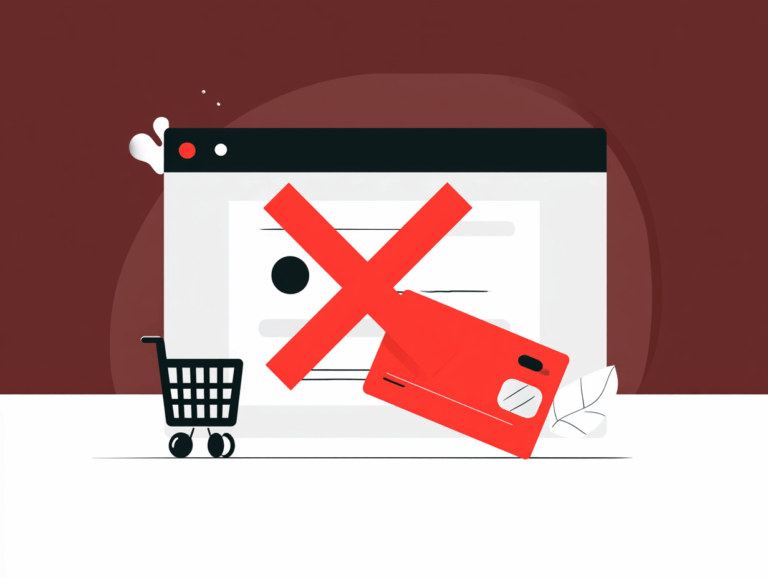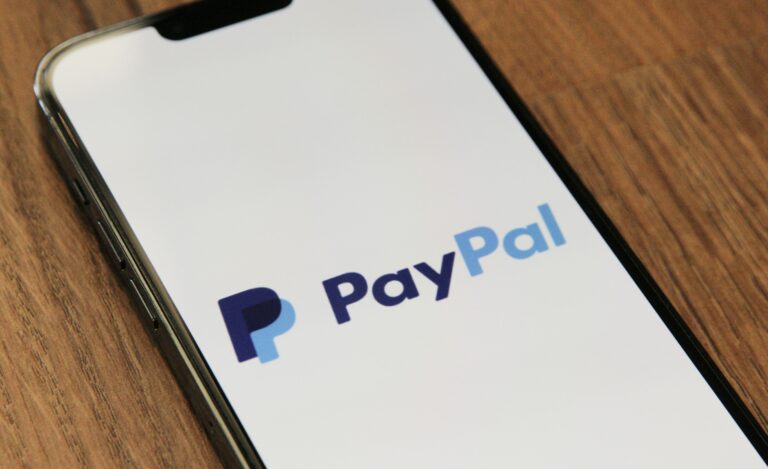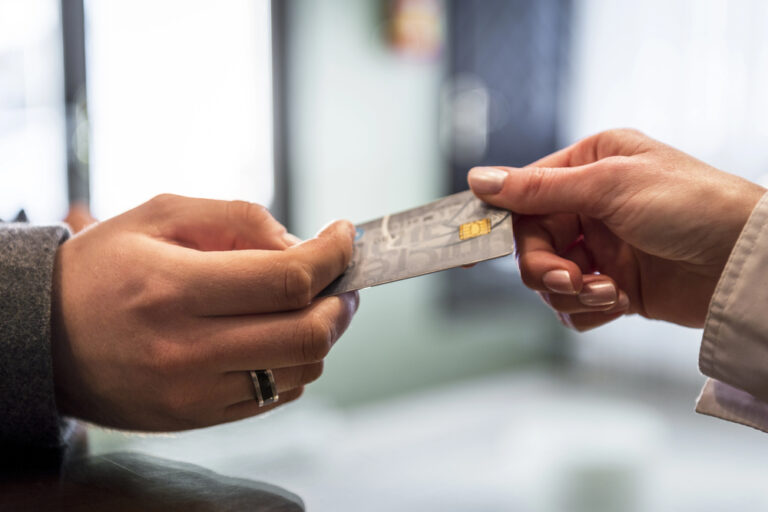Stripe, Shopify, PayPal, Square. What do they all have in common? Super simple pricing and sign-up processes.
That’s because they all offer flat-rate pricing instead of more detailed options like interchange plus or tiered pricing. Let’s get into what flat-rate pricing is and why it might or might not work for your business.
BETTER PAYMENT PROCESSING IS HERE
What Is Flat-Rate Pricing?
Flat-rate pricing simplifies credit card processing by charging merchants one fixed rate for all transactions, regardless of the card type or transaction details. Instead of juggling multiple rates for different cards, you pay the same percentage fee whether your customer uses a basic debit card or a premium rewards credit card.
Most flat-rate processors charge between 2.6% and 3.5% per transaction, plus a small fixed fee (usually around $0.30). This means if you process a $100 sale, you’ll pay roughly $2.90 to $3.80 in fees, depending on your processor.
That’s the gist, anyway. The rate you see on the application is not exactly what you pay in the end.
How Flat-Rate Pricing Works
Think of flat-rate pricing as the Netflix of payment processing. Just like Netflix charges you one monthly fee instead of billing you per movie, flat-rate processors charge you one simple rate for all your credit card transactions. No surprises, no complicated math, and definitely no need for a finance degree to understand your bill.
With flat-rate pricing, your processor absorbs the complexity of interchange fees and card network costs. They calculate an average rate that covers their expenses and profit margin, then pass that single rate to you. This makes budgeting predictable and eliminates surprise fees.
DOES FLAT-RATE PRICING SUIT YOUR BUSINESS?
The Credit Card Transaction Process
When a customer enters their card info on your payment gateway, several parties get paid along the way. Here’s exactly what happens to your money.
Step 1: The Authorization
Your customer presents their card, and you swipe or insert it into your terminal. The payment information travels through your processor to the card network (Visa, Mastercard, etc.), then to the customer’s bank for approval. This happens in seconds, but no money moves yet.
Step 2: The Settlement
After you close your batch at the end of the day, the actual money transfer begins. Your processor collects funds from your customers’ banks and deposits them into your merchant account, minus their fees.
Step 3: The Fee Distribution
Here’s where your flat-rate fee gets divided up:
Interchange Fees (1.5% – 2.3%): The customer’s bank takes the largest chunk. These rates vary based on card type, but you don’t see this complexity with flat-rate pricing.
Assessment Fees (0.1% – 0.15%): Visa, Mastercard, and other card networks charge these fees for using their systems.
Processor Markup (0.5% – 1.2%): Your payment processor keeps this portion for providing their services, technology, and customer support.
Fixed Fees ($0.10 – $0.30): These cover the cost of authorization and other per-transaction expenses.
With flat-rate pricing, you pay one simple fee that covers all these costs. Your processor handles the complex calculations and rate variations behind the scenes.
UNDERSTAND YOUR MERCHANT STATEMENT
Benefits of Flat-Rate Pricing
Predictable Costs
You know exactly what each transaction will cost before you process it. This makes financial planning straightforward and eliminates billing surprises.
Simple Setup
Most flat-rate processors offer quick approval and easy setup. You can often start accepting cards within 24-48 hours of applying.
No Contract Requirements
Many flat-rate providers operate month-to-month without long-term contracts or early termination fees.
Transparent Pricing
You won’t find (many) hidden fees, rate markups, or confusing terminology in your monthly statements. What you see is what you pay.
Built-in PCI Compliance
Most flat-rate processors include PCI compliance tools and monitoring in their standard packages.
Drawbacks of Flat-Rate Pricing
Higher Costs for High-Volume Businesses
If you process large transaction volumes, flat-rate pricing often costs more than interchange-plus pricing models. The convenience premium adds up quickly and hurts your bottom line.
No Rate Optimization
You pay the same rate for cheap debit cards and expensive reward cards. Businesses that process mostly low-cost transactions subsidize those processing premium cards.
Limited Customization
Flat-rate packages come with standard features. You can’t negotiate rates or customize your processing setup like you can with traditional processors.
Potential for Rate Increases
Since you’re not locked into specific interchange rates, your processor can raise rates more easily than with other pricing models.
Who Should Use Flat-Rate Pricing?
Flat-rate pricing works best for:
Small Businesses: If you process less than $10,000 monthly, the convenience often outweighs the cost premium.
New Merchants: When you’re starting out, predictable costs help with budgeting and cash flow management.
Seasonal Businesses: Variable processing volumes make flat-rate pricing’s consistency valuable.
Service-Based Companies: Businesses with higher average transaction amounts benefit more from percentage-based pricing.
Mobile Vendors: If you process payments at markets, events, or customer locations, flat-rate mobile solutions offer unmatched convenience.
Common Flat-Rate Pricing Models
Standard Flat-Rate
One rate for all swiped, dipped, and tapped transactions (typically 2.6% – 2.9%).
Keyed-Entry Rate
Higher rate for manually entered transactions (usually 3.5% – 3.9%) due to increased fraud risk.
Online Rate
Special rate for e-commerce transactions, often falling between swiped and keyed rates.
ACH/Bank Transfer Rate
Much lower rate (0.5% – 1%) for bank-to-bank transfers, though these take longer to process.
Frequently Asked Questions
Q: Is flat-rate pricing more expensive than other models?
A: For small businesses processing under $5,000 monthly, flat-rate pricing often costs the same or less than traditional models. Higher-volume businesses typically pay more for the convenience.
Q: Can I negotiate flat-rate pricing?
A: Most flat-rate processors offer standard rates with little room for negotiation. However, high-volume merchants might qualify for custom rates.
Q: What happens if I process a really large transaction?
A: You pay the same percentage rate regardless of transaction size. However, some processors cap the maximum fee per transaction.
Q: Do I need special equipment for flat-rate processing?
A: Many processors offer free or low-cost terminals. Mobile processors often provide card readers that connect to smartphones or tablets.
Q: How quickly do I receive my money?
A: Most flat-rate processors offer next-day deposits, with some providing same-day funding for an additional fee.
Q: What if my business grows significantly?
A: You can usually switch to a different pricing model with the same processor or move to a new provider without penalties.
Q: Are there any transactions that cost more?
A: International cards, manually keyed transactions, and chargebacks typically incur higher fees even with flat-rate pricing.
Q: Do flat-rate processors offer the same fraud protection?
A: Yes, flat-rate processors provide the same security features and fraud monitoring as traditional processors.
Flat-rate pricing transforms credit card processing from a complex financial puzzle into a straightforward business expense. While it might not offer the lowest possible rates for every business, it delivers something equally valuable: simplicity and predictability in an otherwise complicated industry.









